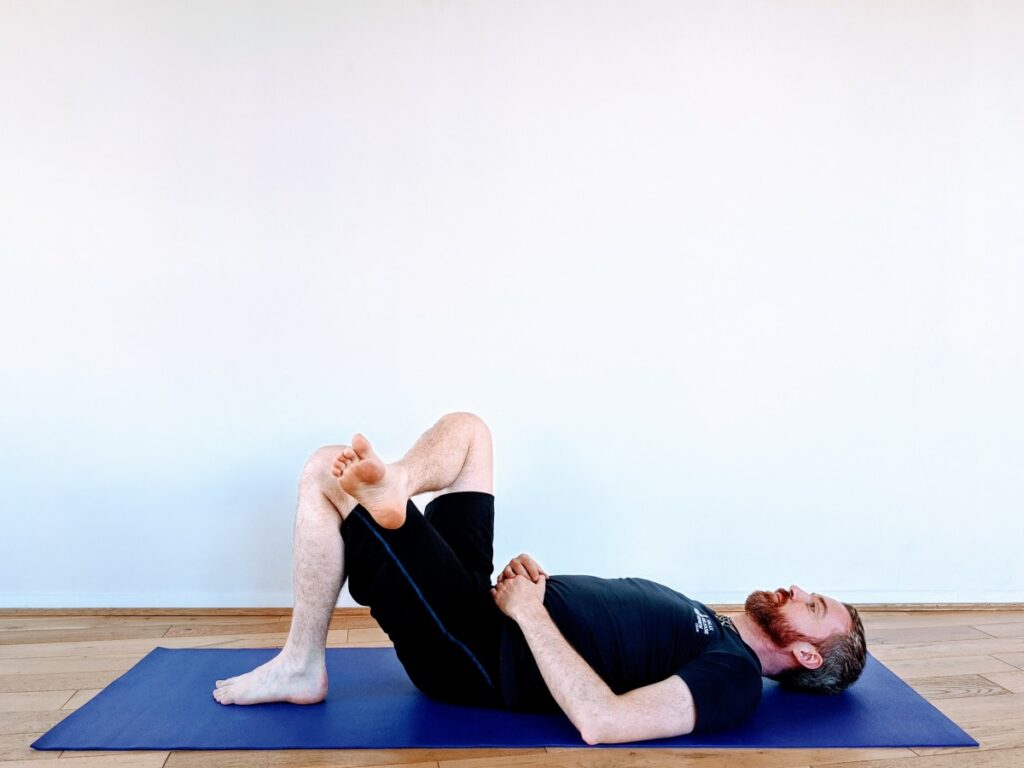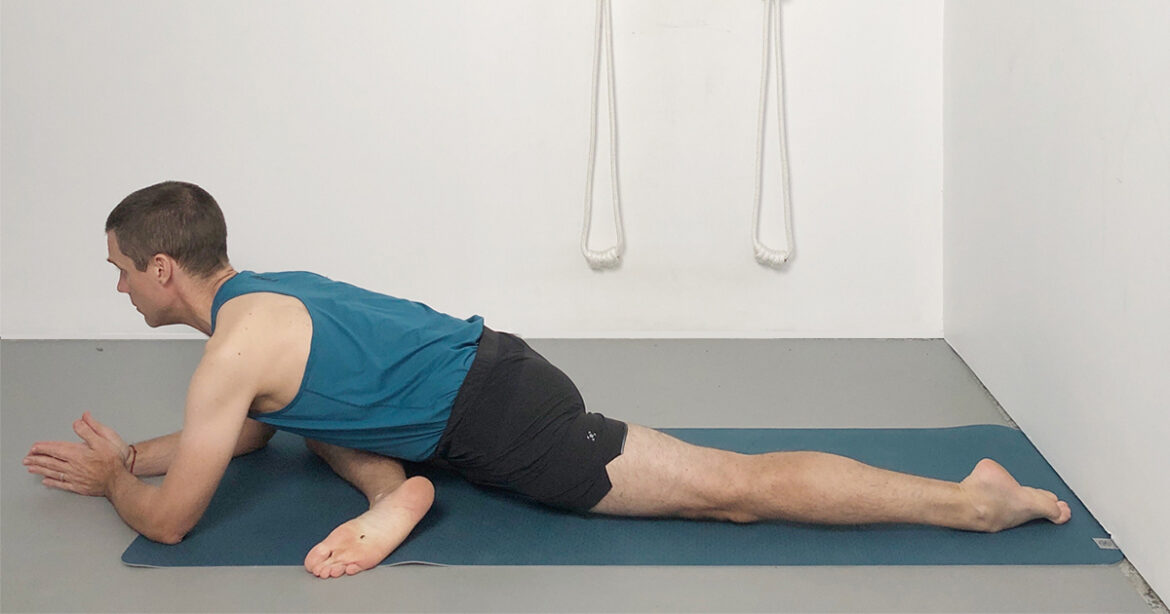Why the Piriformis Muscle Matters More Than You Think
The piriformis muscle doesn’t get a lot of attention—until it starts causing problems. Located deep in the buttock, this small muscle plays a big role in stabilizing the hip and assisting with movements like walking, standing, and shifting your weight. The real trouble begins when the piriformis becomes tight or irritated, which can compress the sciatic nerve that runs directly beneath—or in some cases, through—it. That’s when everyday actions like sitting, bending, or even standing can trigger discomfort.
Understanding how vital this muscle is can be a game changer, especially if you’re someone who spends long hours seated or lives an active lifestyle. Taking just a few minutes each day to include a piriformis stretch in your routine can lead to lasting relief and improved mobility.
How Piriformis Tightness Affects Your Body
When the piriformis becomes shortened or overworked, it can irritate nearby tissues. The most commonly affected structure is the sciatic nerve, which causes what many refer to as “sciatica.” This radiating pain can travel from the lower back all the way down the leg. Even if you’re not experiencing full-blown sciatic symptoms, tightness in the piriformis can create discomfort in the hips, lower back, and thighs. It can even lead to poor posture and movement imbalances over time.
For athletes, poor piriformis function can mean compromised performance. For office workers, it could be the hidden culprit behind nagging backaches. And for anyone in between, the lack of flexibility in this one deep muscle can take a toll on everyday comfort.
5 Piriformis Stretch Routines You Can Do Every Day
These daily routines are practical, beginner-friendly, and don’t require any fancy equipment. Just consistency, intention, and a few minutes out of your day.
1. Seated Piriformis Stretch
This is one of the easiest ways to release tension in the piriformis—especially useful if you’re stuck at a desk for long hours. Sit upright in a chair, place your right ankle on your left knee, and gently lean forward while keeping your back straight. You’ll feel a stretch deep in your hip. Hold it for 20–30 seconds and switch sides. It’s subtle but surprisingly effective.
2. Supine Piriformis Stretch
Lie flat on your back with knees bent. Cross your right ankle over your left thigh to create a figure-four shape. Reach through and grab behind your left thigh, gently pulling it toward your chest. This stretch gets into the piriformis with less strain on your spine. It’s perfect for unwinding at the end of the day.
3. Pigeon Pose Variation
Borrowed from yoga, the pigeon pose offers a deeper stretch and helps open up the hips. Start in a tabletop position, then slide your right knee forward toward your right wrist and extend your left leg behind you. Rest your hips toward the ground and stay upright or lean forward for more intensity. While it might require some flexibility, it’s one of the most thorough ways to stretch the piriformis.
4. Wall-Assisted Stretch
Sometimes, you need extra support. Lie on your back near a wall and place your foot flat against it. Cross your ankle over your opposite knee and let the wall hold your leg in place. This version allows you to ease into the stretch without straining your neck or lower back, making it ideal for those with limited mobility.
5. Foam Rolling for Piriformis Relief
A foam roller isn’t a stretch in the traditional sense, but it acts as a form of self-myofascial release. Sit on the foam roller and cross one ankle over the opposite knee. Lean slightly toward the side of the crossed leg and slowly roll back and forth. This technique targets muscle knots and improves circulation in the area. Use it cautiously if your sciatic nerve is sensitive.

Tips for Making These Stretches a Daily Habit
Adding any new routine to your day can be a challenge. The key with piriformis stretching is to keep it short, intentional, and tied to something you already do. For example, stretch while watching TV, after your morning coffee, or before bed. You don’t need a full hour—just 5 to 10 minutes can make a difference.
Hold each stretch for 20 to 30 seconds and aim for two to three rounds on each side. Breathe deeply and avoid bouncing or forcing the movement. The goal isn’t to feel pain—it’s to feel a gentle release.
Consistency always wins over intensity. Doing a piriformis stretch daily helps maintain flexibility and prevents tightness from building up again.
When to Seek Help: Signs It’s More Than Just Tight Muscles
Stretching can do wonders, but it’s not a cure-all. If your pain is sharp, gets worse with movement, or is accompanied by numbness or weakness in your legs, it may be time to consult a healthcare professional. Physical therapists can assess your movement patterns, address muscle imbalances, and tailor a plan to your needs.
Sometimes what feels like piriformis tightness could be a herniated disc or another condition mimicking similar symptoms. A clear diagnosis ensures that your recovery path is both safe and effective.
What Does a Piriformis Stretch Actually Help With?
Does piriformis stretching reduce sciatica pain?
Yes, it absolutely can. The piriformis muscle sits deep in your glutes and, when it gets tight or inflamed, it can press on the sciatic nerve—causing that familiar pain that shoots down your leg. Stretching helps relieve the tension and can ease the pressure on the nerve.
Can it help with lower back pain too?
It can! While the stretch itself targets the hip and glute area, many people report reduced lower back tension after consistently doing piriformis stretches. That’s because everything in the lower body is connected—tight hips often lead to back strain.
Is It Good for Flexibility and Mobility?
Will this stretch improve hip flexibility?
Yes. The piriformis is part of your hip stabilizers, and when it’s loose, your hips move better. Regular stretching can increase your hip range of motion, making everything from walking to squatting feel smoother.
How long should I hold the stretch each day?
Hold the stretch for about 20–30 seconds and repeat 2–3 times on each side. If you’re new to it, even 15 seconds is a great place to start. Just breathe deeply and avoid forcing the position.
What’s the Right Way to Do a Piriformis Stretch?
What is the correct technique?
One popular method is the lying piriformis stretch:
- Lie on your back.
- Bend both knees.
- Place your right ankle over your left knee.
- Gently pull your left thigh toward your chest until you feel a stretch in your right glute.
Always move slowly and listen to your body. Avoid jerky movements.
Is it safe to do this stretch at home?
Absolutely. Most piriformis stretches are low-impact and beginner-friendly. Just make sure you’re on a mat or soft surface and avoid pushing into pain.
Can It Prevent Injury?
Can I get hurt doing this stretch?
Only if you force it or bounce while holding the stretch. The goal is to ease into the movement, not attack it. If you feel sharp or stabbing pain, stop immediately.
Do gym-goers need this stretch?
Yes, especially if you lift weights or do leg-heavy routines. Tight piriformis muscles can limit mobility and lead to imbalances. This stretch helps keep your muscles happy and injury-free.
What If I Sit a Lot During the Day?
Why is this stretch important for desk workers?
If you sit for long hours, your hips and glutes tighten up, and your piriformis gets shortened. That can trigger stiffness and eventually lead to discomfort. Stretching this muscle daily helps undo the effects of long sitting sessions.
Does long sitting cause piriformis tightness?
Yes. Sitting for extended periods reduces blood flow and mobility, which tightens the piriformis over time. Even standing up every hour and doing a quick stretch can make a big difference.
When and How Often Should I Stretch?
How many times a day is ideal?
Once or twice a day is perfect. Morning stretches help you wake up your muscles; evening stretches help wind things down and release tension built up throughout the day.
Is it better to stretch in the morning or at night?
Both have benefits:
- Morning: Loosens stiff muscles and boosts energy.
- Evening: Relaxes your body and can improve sleep.
Pick what fits your routine best—or do both!
Is This Stretch Really Good for Sciatica?
Does it relieve pressure from the sciatic nerve?
Yes. In many cases, sciatica is caused by piriformis syndrome, where the muscle pinches the nerve. Stretching helps reduce compression and inflammation, offering relief without medication.
Are there other stretches for sciatica too?
Definitely. Some great options include:
- Knee-to-opposite-shoulder stretch
- Seated spinal twist
- Cat-cow pose
- Child’s pose
But piriformis stretch is a top pick for direct sciatic nerve relief.
I’m a Beginner—Is This Stretch Easy to Start?
Which stretch should I try if I’m new to this?
Try the seated piriformis stretch:
- Sit on a chair with your feet flat.
- Cross your right leg over your left knee.
- Lean forward gently until you feel a stretch in your glutes.
It’s perfect for beginners and super convenient—can even be done at the office!
I don’t do yoga. Can I still benefit?
Absolutely. You don’t need any fancy poses or yoga background. Piriformis stretching is for everyone—athletes, desk workers, beginners, and even older adults.
Final Thoughts: Small Daily Stretches, Big Long-Term Relief
The beauty of a piriformis stretch is that it doesn’t demand much from you—just a few minutes of focus each day. But those minutes can add up to serious benefits. From reducing tension in your hips to improving how you move and feel, these routines offer a simple but powerful way to take care of your body.
We all carry tension differently, and for many people, the piriformis is one of those quiet troublemakers. The good news? With a handful of stretches and the willingness to stay consistent, you can take control of that tightness and move with more ease every single day.
FAQs About Piriformis Stretching
How long should I hold each piriformis stretch?
About 20 to 30 seconds per side is ideal. Repeat 2–3 rounds for best results.
Should I feel pain during the stretch?
No, you should feel a deep, gentle stretch—not pain. Sharp or shooting pain means stop and reassess.
Can I do piriformis stretches every day?
Yes, gentle daily stretching is safe and recommended, especially if you sit a lot or have sciatic discomfort.
What time of day is best for these stretches?
Any time is fine, but many find relief by doing them in the morning or before bed.
Are stretches enough or do I need to strengthen the area too?
Stretching is a great first step, but pairing it with glute and hip-strengthening exercises can bring better long-term results.
